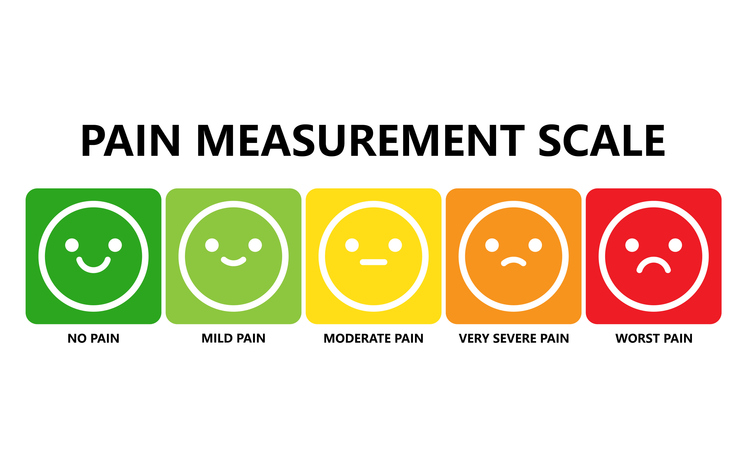Pain
Leeds Assessment of Neuropathic Symptoms and Signs (LANSS)

The Leeds Assessment of Neuropathic Symptoms and Signs (LANSS) pain scale is an assessment tool developed to analyze and classify pain. Its main function is to determine whether nerve damage is the main source of the pain. This is the only tool that is verified to assess the difference between neuropathic and nociceptive pain. It is used to assist clinicians with assessing pain severity or causes.
The LANSS is composed of seven items, which are broken up into two parts. The first portion is a series of five symptom-related questions, while the last part consists of two clinical examination items that may be completed with a health care professional. This pain scale includes the following:
- Does the pain produce unpleasant sensations, such as tingling, pricking, or pins and needles?
Yes (5)
No (0) - Is there a different skin aspect in the painful areas, such as redder skin or mottled appearance?
Yes (5)
No (0) - Does stroking the skin in the painful area or wearing tight clothing items produce unpleasant sensations?
Yes (3)
No (0) - Are there any sensations, such as electric shocks, bursting, or jumping corresponding to painful episodes (i.e., unexplained bursts of pain)?
Yes (2)
No (0) - Are there burning sensations in the painful areas or a sudden temperature change?
Yes (1)
No (0) - Result of stroking the non-painful area and the described painful area with cotton wool.
Allodynia in painful area (5)
Normal sensations in both areas (0) - Result to touching (pinprick) both areas with a 23 gauge needle.
Altered PPT in the painful area (3)
Equal sensations in both areas (0)
A score of 12 or more on this scale confirms a diagnosis of neuropathic pain to some degree. Scores below 12 are less likely to show neuropathic pain.
A modified version of the LANSS (the S-LANSS, or self-report LANSS) is available for individuals to complete without a physician present. Although both the LANSS and S-LANSS have been approved for many pain clinic settings, validation for use in a primary care setting is yet to be obtained.
Additional sources: London Pain Clinic, MDApp, and Scientific Electronic Library Online Brazil


















